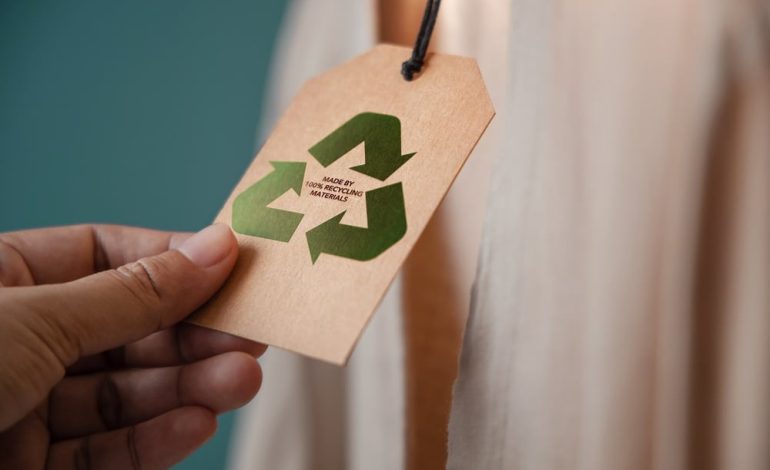When it comes to home decor, we frequently hear the terms eco-friendly, ecologically friendly, recycled, and sustainable. If you’re confused about what makes wood sustainable, you’re not alone. Here, we cover all the essential information concerning sustainable wood.
For many hundreds of years, whenever humans needed to construct something, they would enter a forest or a wooded area and cut down the necessary trees. Of course, the forested regions were beginning to get a bit scarce after thousands of years of people simply helping themselves and with the enormous growth in population around the world.
If you don’t want to support illegal logging or encourage deforestation, you need to be aware of how to buy sustainable wood. We thought it’d be useful to take a look at the subject to help you avoid buying the ‘wrong’ stuff.
Sustainable wood comes from sustainably managed forests. It’s renewable because the forest stewards manage the landscape to prevent damage to eco-systems, watersheds, wildlife and the trees themselves, taking a long term rather than short term view of the resource.
Sustainability in this context means the forest should still be there for your grandchildren and great grand-kids, and be able to soak up carbon emissions and keep our air clean for generations to come, as well as a being haven for wildlife.
Wood from unsustainable sources, on the other hand, is chopped down without a second thought leaving bare areas that, unless they’re carefully treated, never really recover to their former glory. The effects are clear – illegal logging leads to wholesale destruction.
In general, wood is a sustainable material because of timber trees’ carbon sequestration potential and the carbon offset value at the end of the wood product’s life-cycle. However, some woods are better than others for furniture to stand the test of time.
One way of assessing the sustainability of wooden furniture is to go through their life-cycles and examine each stage’s sustainability. This life-cycle assessment (LCA) is a method to evaluate the environmental impacts of products and materials. Over the years, companies have strategically used LCA to research and create more sustainable products. So, let’s look at the LCA of some of the most sustainable woods for furniture!
The life-cycle assessment typically covers some or all of the following environmental impacts:
- Global warming potential
- Primary energy demand from resources
- Acidification potential
- Freshwater eutrophication potential
- Marine eutrophication potential
- Photochemical ozone creation potential
- Resource depletion
The global warming potential impact reflects the risk of accelerating climate change through the emissions of greenhouse gases. It focuses on CO2 and other greenhouse gasses (CH4, nitrous oxide, and chlorofluorocarbons) released throughout a product’s life-cycle. This impact is measured in kg of CO2 equivalent emitted per unit of a product – the carbon footprint.
Read Also: How do You Source Sustainable Products?
Deciding factors for (high or low) carbon emissions during construction lumber’s life-cycle are:
- Drying requirements of timber
- Distribution of timber trees
As trees grow, they sequester carbon dioxide from the atmosphere. The carbon uptake can often compensate fully for carbon emitted during all the stages of the life-cycle. It indicates a negative carbon balance, which is environmentally favorable. The lower the carbon balance stays below zero, the better it is for the climate.
These Are the 7 Most Sustainable Types of Wood for Indoor Furniture. These woods are highly available because they have large populations. It makes sustainable harvesting more attainable. Also, their high strength and density mean that they can last a long time inside your home, keeping their carbon storage role. Most importantly, the plain-sawn form of these woods has an environmentally favorable carbon balance (aka more carbon uptake than carbon emission).
Overall, these woods are highly sustainable. However, the actual environmental impact of wooden indoor furniture depends on many factors, especially the distance and mode of transportation. Let’s dive deeper into some wood and the stages of its life cycle and find out how it can be more sustainable.
Black Cherry Wood: Durable Hardwood from Fast-Growing Trees
Back cherry wood has a carbon footprint of 301 kg CO2-eq, cradle-to-gate. That is lower than all US-native hardwoods of similar density and strength.
Here are the life-cycle stages of black cherry wood and each stage’s sustainability assessment:
- Growing of black cherry wood: Black cherry (Prunus serotina)trees grow at fast rates of 2 to 4 feet per year. They act as a carbon sink during their long lifespan, helping to mitigate the climate crisis.
- Manufacturing of black cherry wood: Kiln drying 1-inch-thick black cherry lumber takes up to 120 hours and has a relatively low carbon footprint of 42.7 kg CO2-eq. Manufacturing carbon emission of black cherry is similar to willow wood and smaller than many other dense hardwoods like hard maple, hickory, red oak, and white oak.
- Transportation of black cherry wood: Black cherry grows abundantly in the wild throughout the US, resulting in a lower transporting carbon footprint. Thus, it is a sustainable alternative to imported tropical woods like mahogany or teak
- Usage of black cherry wood: Black cherry furniture is long-lasting carbon storage because black cherry, especially its heartwood, is very durable and resistant to decay. Regarding usage, it is a very sustainable option, more so than hardwoods like maple.
- End-of-life of black cherry wood: The end-of-life stage for black cherry furniture is sustainable when the wood is reused or burned as bioenergy.
Black cherry (or American cherry) wood is a very sustainable hardwood for making fine furniture because of the durability of the timber and the fast rate at which the cut wood is replaced in the wild.
American Beech Wood: Durable Hardwood From Domestically Available Species
Beechwood has a carbon footprint of 377 kg CO2-eq, cradle-to-gate, a mid-range value compared to commonly traded American hardwoods. Beechwood’s strength is comparable to oak, but its carbon footprint is about two-thirds of white oak’s.
Here are the life-cycle stages of beechwood and each stage’s sustainability assessment:
- Growing of beechwood: Growing American beech (Fagus grandifolia) is sustainable because of its carbon sequestration potential. As beech trees grow, they absorb CO2 from the atmosphere while releasing oxygen. They act as a carbon sink during their long lifespan, which averages from 300 to 400 years. This means they are taking greenhouse gases out of the atmosphere, helping to mitigate the climate crisis. And they can store a lot as they grow up to 130 feet in height and 5 feet in trunk diameter.
- Manufacturing of beechwood: Beechwood is challenging to dry because it is prone to warp, split and checks. Kiln drying can take 37 days. In comparison, kiln-drying pine could take 14 days, and tulipwood takes only 4 to 5 days.
The carbon footprint of the drying step for a 4/4 inch log is 51.6 kg CO2-eq – lower than that of, for example, white oak (98.3 kg CO2-eq) and red oak (89.7 CO2-eq), but higher than black cherry (42.7 CO2-eq).
- Transportation of beechwood: American beech trees grow widely across the eastern US in mixed hardwood forests. Because it is a domestic wood, the transporting footprint would be lower than imported hardwoods like mahogany or teak.
- Usage of beechwood: Beech is a strong and heavy hardwood, good for making furniture pieces that require bending (like chairs). It is susceptible to insect attacks and thus unsuitable for outdoor use. When beechwood is used for interior furniture, its durability is comparable to oak and hard maple.
- End-of-life of beechwood: The end-of-life stage for beechwood furniture is sustainable when the wood is reused or burned as bioenergy.
Beechwood is one of the most sustainable woods for furniture that withstand a lot of pressure because it is strong and dense. The carbon footprint of beechwood is relatively low compared with that of woods with similar strength (like oak). Furniture made with beech can last for many decades, extending its role as carbon storage.
Hard Maple Wood: Durable Hardwood from Highly Sustainably Managed Stock
Hard maple is a sustainable hardwood for furniture because these species are abundant in the US forests. Hard maple furniture last many years while requiring little care.
Here are the life-cycle stages of hard maple wood and each stage’s sustainability assessment:
- Growing of hard maple wood: Because of the large population of hard maple trees in the US, it takes merely 3.31 seconds to grow one cubic meter of timber. Though hard maples aren’t rapid-growing trees, such a growing stock – 6.6% of total US hardwood growing stock – allows harvesting timber without harming the forests.
- Manufacturing of hard maple wood: Kiln-drying one cubic meter of 1-inch hard maple logs emits 47 kg CO2-eq, which is lower than the drying footprint of beechwood, red oak, and white oak (other common hardwoods for furniture).
- Transportation of hard maple wood: Because hard maples are widely distributed in the eastern part of the US, it is possible to source this timber at relatively short transporting distances. These species have a lower transportation footprint than imported hardwoods of similar density and strength.
- Usage of hard maple wood: Hard maple furniture are durable because this timber is heavy with good strength properties. Durable hardwood material is more environmentally friendly because the longer a piece of furniture last, the more sustainable it is in using the furniture as carbon storage.
- End-of-life of hard maple wood: The end-of-life stage for hard maple is sustainable when the wood can be reused for another woodworking project or burned as bioenergy.
The maple trees grow in abundance throughout the US forests. Hard maple has a carbon footprint of 394 kg CO2-eq – higher than many other softer and lighter hardwoods. Yet, it is a sustainable material thanks to the large growing stock and the durability of the timber.
Conclusion
Indoor furniture is available and is manufactured from trees that have been responsibly harvested. Black cherry, beech, hard maple, ash, eastern red cedar, mango, and bamboo are the seven timbers that are considered to be the most environmentally friendly solutions. The reasons for this are the comparatively low carbon emissions during production, transportation, and harvesting, as well as the many years and decades that these forests have been storing carbon.
Use indoor furniture made from these woods as long as you can to increase sustainability. Then, consider upcycling the material to prolong its use or make plans for its complete recycling.


